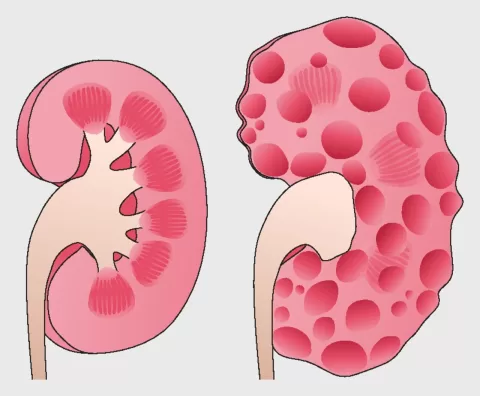Understanding agoraphobia is crucial for recognizing its profound impact on individuals’ lives. This complex anxiety disorder leads to overwhelming fear of situations where escape might be difficult, often resulting in avoidance of public spaces. Many people grappling with agoraphobia experience debilitating symptoms, such as rapid heartbeat and excessive sweating, which can further isolate them. With various agoraphobia treatment options available, including cognitive behavioral therapy and medications, there is hope for many seeking to overcome their fears. Personal experiences with agoraphobia highlight the importance of empathy and support from friends and family, making awareness essential in addressing this mental health condition.
Agoraphobia, often referred to as situational anxiety, manifests as a profound fear of being in circumstances that may trigger panic attacks. This condition can severely limit individuals’ ability to engage in everyday activities, such as shopping or using public transport. Recognizing the symptoms and understanding the various treatment methods—such as therapy and medication—are vital steps in managing this disorder. Furthermore, sharing personal accounts of living with this anxiety can foster greater understanding and support within communities. By addressing these issues, we can promote a more compassionate approach to those affected by agoraphobia and similar mental health challenges.
Understanding Agoraphobia: A Deep Dive into Symptoms
Agoraphobia is more than just a fear of open spaces; it encompasses a wide range of symptoms that can greatly hinder an individual’s everyday life. Common symptoms include rapid heartbeat, excessive sweating, dizziness, and a profound sense of impending doom. These physical manifestations of anxiety can be overwhelming, leading to avoidance behaviors where individuals refrain from leaving their homes or engaging in social situations. Recognizing these symptoms is crucial, as acknowledging the condition is often the first step toward seeking help and finding effective treatment options.
The intricate relationship between agoraphobia symptoms and daily functioning is significant. Individuals may find themselves trapped in a cycle of anxiety, where the fear of experiencing panic in public places leads to further isolation. This isolation can exacerbate feelings of loneliness and depression, creating a compounded effect on mental health. Understanding how agoraphobia presents itself through these symptoms is essential for both those experiencing it and their loved ones, fostering empathy and support as individuals navigate their struggles.
Effective Treatment Options for Agoraphobia
When it comes to treating agoraphobia, various options can help individuals regain control over their lives. Cognitive Behavioral Therapy (CBT) stands out as one of the most effective approaches, allowing individuals to identify and modify negative thought patterns that contribute to their anxiety. Through graduated exposure therapy, individuals gradually confront their fears, learning coping strategies to manage anxiety in real-world situations. This therapeutic process not only addresses the symptoms but also empowers individuals to reclaim their independence.
In addition to psychotherapy, medications such as selective serotonin reuptake inhibitors (SSRIs) are often prescribed to help manage symptoms effectively. These medications can reduce the intensity of panic attacks and improve overall mood, creating a more stable foundation for individuals to engage with therapy. A combination of these treatment strategies often yields the best results, and seeking guidance from a mental health professional is crucial in developing a personalized treatment plan that addresses the unique challenges faced by each individual.
Personal Experiences with Agoraphobia: Real-Life Insights
Personal experiences shared by individuals living with agoraphobia offer valuable insights into the daily struggles associated with this condition. Many individuals express a longing for understanding from their peers, as the disorder is frequently misconceived as simply a fear of leaving home. In reality, it involves deep emotional turmoil and complex psychological battles that extend far beyond physical limitations. These narratives not only highlight the severity of agoraphobia but also emphasize the importance of compassion and support from friends and family.
Moreover, real-life accounts illustrate the significance of social support systems in overcoming agoraphobia. Many individuals find that having a trusted companion during outings can alleviate feelings of panic and anxiety. This buddy system fosters a sense of safety and encouragement, making it easier to face challenging situations. Sharing these experiences is vital in promoting awareness and understanding, helping to combat stigma and encourage those affected by agoraphobia to seek help without feeling shame.
Agoraphobia and Mental Health: The Intersection of Fear and Anxiety
Agoraphobia is deeply intertwined with mental health, often co-occurring with other anxiety disorders such as panic disorder and generalized anxiety disorder. The fears associated with agoraphobia can lead to a significant decline in overall mental well-being, creating a cycle of anxiety that is difficult to break. Understanding this relationship is crucial for both individuals and mental health professionals, as it informs treatment strategies and highlights the importance of addressing underlying issues.
Furthermore, recognizing the impact of agoraphobia on mental health can lead to more tailored therapeutic approaches. By considering the individual’s full spectrum of experiences and co-existing conditions, mental health providers can develop comprehensive treatment plans that not only focus on reducing symptoms but also enhance overall emotional resilience. This holistic view encourages a more supportive environment, fostering recovery and encouraging individuals to engage in their treatment journey actively.
Overcoming Agoraphobia: Strategies for Success
Overcoming agoraphobia is a challenging journey, but with the right strategies and support systems, individuals can make significant progress. One effective approach is setting small, achievable goals that gradually push the boundaries of comfort. For example, starting with short outings to less crowded places can help foster a sense of success and build confidence. These incremental steps can create a positive feedback loop, encouraging individuals to continue facing their fears and expanding their comfort zones.
In addition, participating in support groups can be incredibly beneficial for those dealing with agoraphobia. Sharing experiences with others who understand the challenges can provide a sense of community and validation. This connection can help individuals feel less isolated, offering encouragement and practical advice on managing symptoms. The collective wisdom of those who have faced similar struggles can be a powerful motivator, inspiring individuals to push through their fears and embrace a more fulfilling life.
Frequently Asked Questions
What are the common symptoms of agoraphobia?
Understanding agoraphobia symptoms is crucial for recognizing the disorder. Common symptoms include rapid heartbeat, excessive sweating, dizziness, a sense of impending doom, and fear of losing control. These symptoms often lead to avoidance of public places, significantly impacting daily life.
What treatment options are available for agoraphobia?
When exploring agoraphobia treatment options, individuals often benefit from Cognitive Behavioral Therapy (CBT) and medications like SSRIs. CBT helps change negative thought patterns, while medications can alleviate panic symptoms, making it easier to confront feared situations.
How does agoraphobia affect mental health?
Agoraphobia significantly impacts mental health, leading to increased anxiety and isolation. Those affected often struggle with avoidance behaviors that exacerbate feelings of loneliness and fear, making it vital to understand the broader mental health implications of this disorder.
What are personal experiences with agoraphobia like?
Personal experiences with agoraphobia reveal the deep emotional struggles faced by individuals. Many describe feelings of panic in crowded or open spaces and emphasize the importance of social support in overcoming challenges and reducing stigma associated with the disorder.
Can agoraphobia be overcome?
Overcoming agoraphobia is possible with the right support and treatment. Through a combination of therapy, medication, and gradual exposure to feared situations, many individuals find effective ways to manage their symptoms and improve their quality of life.
| Key Points | Details |
|---|---|
| Definition of Agoraphobia | An anxiety disorder characterized by fear of situations where escape may be difficult or help unavailable during a panic attack. |
| Symptoms | Common symptoms include rapid heartbeat, excessive sweating, dizziness, sense of impending doom, and fear of losing control. |
| Treatment Options | Treatment typically involves Cognitive Behavioral Therapy (CBT) and medications like SSRIs or anti-anxiety drugs. |
| Real-Life Experiences | Personal narratives reveal the emotional struggles of agoraphobia and the importance of social support. |
| Prevalence | Agoraphobia affects a significant portion of the population and is recognized in the DSM-5. |
| Cultural References | Media portrayals can influence public perceptions and discussions on mental health. |
Summary
Understanding agoraphobia is essential to grasp the complexities of this anxiety disorder that affects many individuals. This condition involves intense fear of situations where escape might be difficult or help unavailable, leading to significant avoidance behaviors. Recognizing the symptoms such as rapid heartbeat, excessive sweating, and dizziness can help in addressing the disorder effectively. Treatment options, including Cognitive Behavioral Therapy (CBT) and medications, provide relief and support to those affected. Personal experiences shed light on the emotional challenges faced, emphasizing the need for social support and understanding. Through awareness and education, we can combat stigma and promote empathy towards individuals living with agoraphobia.
The content provided on this blog (e.g., symptom descriptions, health tips, or general advice) is for informational purposes only and is not a substitute for professional medical advice, diagnosis, or treatment. Always seek the guidance of your physician or other qualified healthcare provider with any questions you may have regarding a medical condition. Never disregard professional medical advice or delay seeking it because of something you have read on this website. If you believe you may have a medical emergency, call your doctor or emergency services immediately. Reliance on any information provided by this blog is solely at your own risk.







